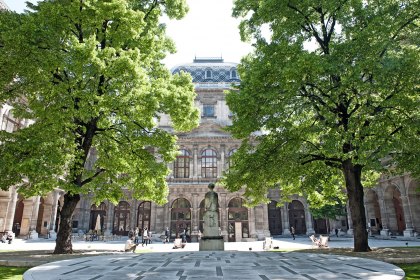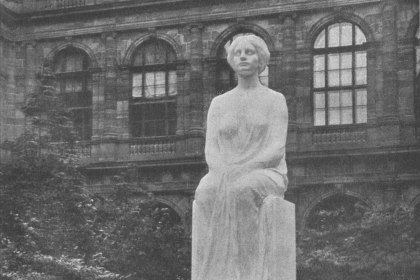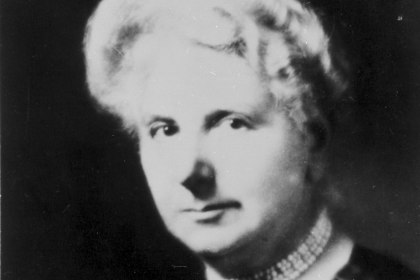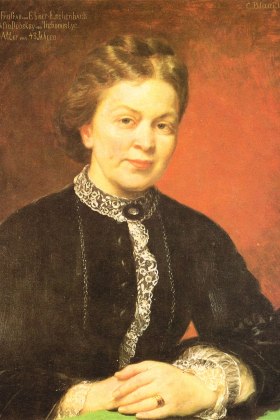“The Muse has had it”
The invisibility of women in science is reflected in the practice of remembrance at the University of Vienna. Since 2009, the University of Vienna has been raising awareness of the achievements of female scientists and their lack of recognition with the project “Der Muse reicht’s” (“The Muse has had it”) by artist Iris Andraschek. This art project contrasts the male hegemony in scientific practice with an oversized female shadow silhouette.
Omission as point of departure
With 154 monuments the University of Vienna honors prominent figures in its Arkadenhof (arcaded courtyard) – they however only include a single honorary plaque for a woman, namely for Marie von Ebner-Eschenbach. In recent years, this fact has been critically reflected – both scientists and students have repeatedly started initiatives to raise awareness of this circumstance.
This symbolic representation does not accurately reflect the current state of the advancement of women and gender equality at the University of Vienna: While equality will remain an important agenda for the university in the 21st century, significant advances have already been made in regard to gender mainstreaming, particularly since the early 1990s. This positive development of a clear objective for more gender equality in science was supposed to also be made visible on a symbolic level in the honoring politics at the University of Vienna.
The fact that women are almost absent from the university's honoring politics was made the subject of an invitational art contest by the University of Vienna together with the Bundesimmobiliengesellschaft (company that manages Austrian publicly owned real estate) in 2009, which Iris Andraschek won with her concept “Der Muse reicht’s”.
Positioning in the University of Vienna’s Arkadenhof
Iris Andraschek symbolizes the omission of female scientists with a shadow inlay. Women and men not only have the same rights, they also contribute equally to research and teaching. The facts that the admission of women to the university as late as the beginning of the 21st century only made female university careers possible in the first place, and that female professors have only existed in slightly more than the last 50 years of the history of this 650 year old institution founded in 1365 are in this way addressed as a general societal problem.
The artist lets a shadow fall on the patriarchal-humanistic hortus conclusus of the Arkadenhof, which now asserts itself there day and night, no matter the lighting conditions. Andraschek conceptualized the giant shadow silhouette of a woman that lies diagonally on part of the courtyard, standing with her legs apart in a combative stance and thrusting her fist in the air: a conspicuous and at the same time ambivalent symbol for the presence of women in science and a signal for the public recognition that none of them had received at this place.
Iris Andraschek took the central statue of the nymph Castalia as a starting point and fulcrum of her work – both spatially as well as thematically: Castalia guarded the Castalian spring in the temple of Apollo in Delphi, sacred to the muses and whose water inspired poetry and wisdom. Andraschek transforms the allegorical guardian of a science understood as male into an ambiguous, threatening figure, pointing both towards the past and the future. The shadow figure’s ambiguity provocatively symbolizes the presence and absence of women in this context: the fleeting shape of a shadow “forever” solidifies itself in durable granite – the proverbial ephemeral shadow phenomenon that is dependent on light is set in stone.
Description
The shadow inlay made out of anthracite-colored granite “Nero Assoluto” is inlayed into the existing stone floor. It is about 28 meters long and 9 meters broad. Andraschek developed the shadow’s outline from a photo series, in which female employees and students of the University of Vienna took up a stance against their lack of representation in the Arkadenhof and posed as living statues. In interviews they also commented on the omissions in the honoring of women at the university. Based on these photos and following historic and contemporary depictions of revolutionary women, the artist composed the shadow. It was drawn starting at the base of the Castalia fountain and then cut out of the existing limestone and inlayed with precisely cut slabs of granite in drainage mortar. The shadow figure follows the limestone pattern – the gaps are aligned. Two pedestals with inscriptions compliment the work: the two granite cuboids (135x132x38cm) are located at the outside staircase to the Arkadenhof.
Inscription pedestal 1
Pedestal 1 is inscribed with the work’s title, year of origin, the artist’s name and following text::
MEMORIAL FOR THE HONORING OF FEMALE SCIENTISTS THAT DID NOT TAKE PLACE AND FOR THE FAILURE TO RECOGNIZE THEIR ACHIEVEMENTS AT THE UNIVERSITY OF VIENNA.
("ERINNERUNG AN DIE NICHT STATTGEFUNDENEN | EHRUNGEN VON WISSENSCHAFTERINNEN | UND AN DAS VERSÄUMNIS, DEREN LEISTUNGEN | AN DER UNIVERSITÄT WIEN ZU WÜRDIGEN.")
This text was written by Iris Andraschek and explicitly references the failure in the past to acknowledge the achievements of female scientists at the University of Vienna on the same level as their male colleagues.
Inscription pedestal 2
Just as the artist included women of the university in the conception of the shadow, the inscription on the second pedestal also is the product of a discussion process. The Abteilung Frauenförderung und Gleichstellung (Department for the Advancement of Women and Gender Equality), the rectorate and the Institute for Contemporary History invited interested parties to present their suggestions for the pedestal’s text on the internet and/or in a workshop in January 2010. From all suggestions and based on the discussion, the artist picked the following text::
FROM THE SHADOW STEP THOSE WHO HAVE NO NAME ("AUS DEM SCHATTEN TRETEN DIE, DIE KEINEN NAMEN HABEN").
The monument in public dialogue
One of Iris Andraschek’s central goals was to include female scientists in the project, both in the creation of the shadow and the conception of the pedestal inscription. This interaction led to the idea to tackle the subject scientifically in addition to the artistic reflection. Organized by the Institute for Contemporary History in cooperation with the Abteilung Frauenförderung und Gleichstellung, the Forum “Zeitgeschichte der Universität Wien” (“Contemporary History of the University of Vienna”) and the Society of Contemporary History, the conference “Gender and Science: Politics of participation and representation” was held at the University of Vienna from June 17 to 19, 2010. Here, international experts of remembrance and representation research, gender and scientific history and of the advancement of women and politics of equality, discussed aspects of past, current and future positioning of women in scientific practice.
-

„Der Muse reichtʼs“, Kunstprojekt von Iris Andraschek im Arkadenhof der Universität Wien, ausgehend vom Kastaliadenkmal
-
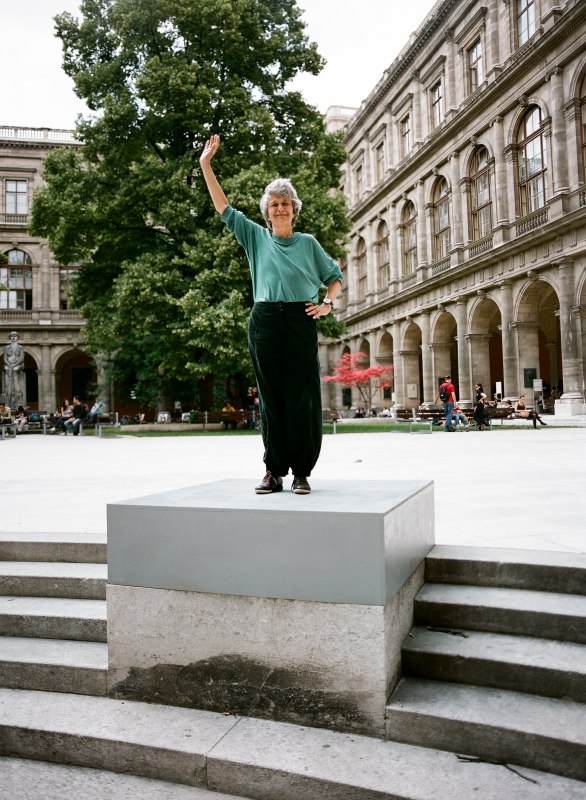
Historikerin Edith Saurer als „lebendes Denkmal“, Fotoserie im Zuge des Kunstprojekts „Der Muse reichtʼs“ von Iris Andraschek im Arkadenhof der Universität Wien
-
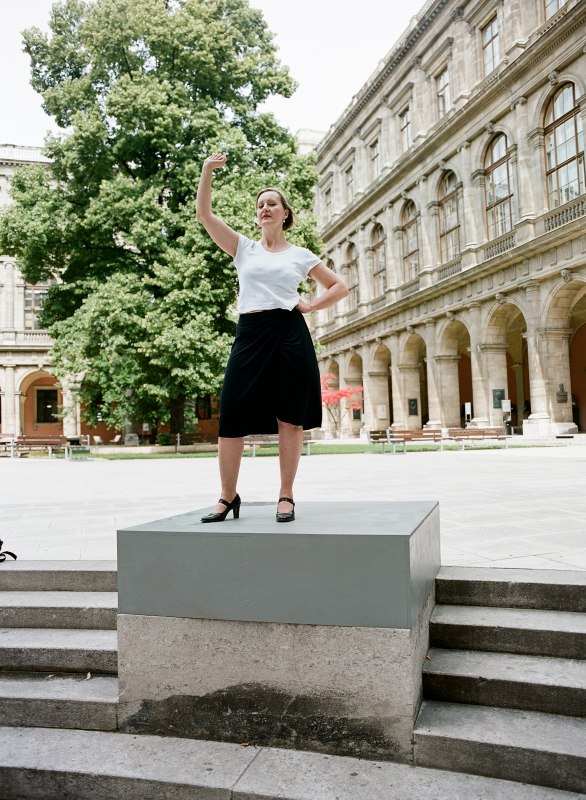
Philosophin Eva Laquièze-Waniek als „lebendes Denkmal“, Fotoserie im Zuge des Kunstprojekts „Der Muse reichtʼs“ von Iris Andraschek im Arkadenhof der Universität Wien
-
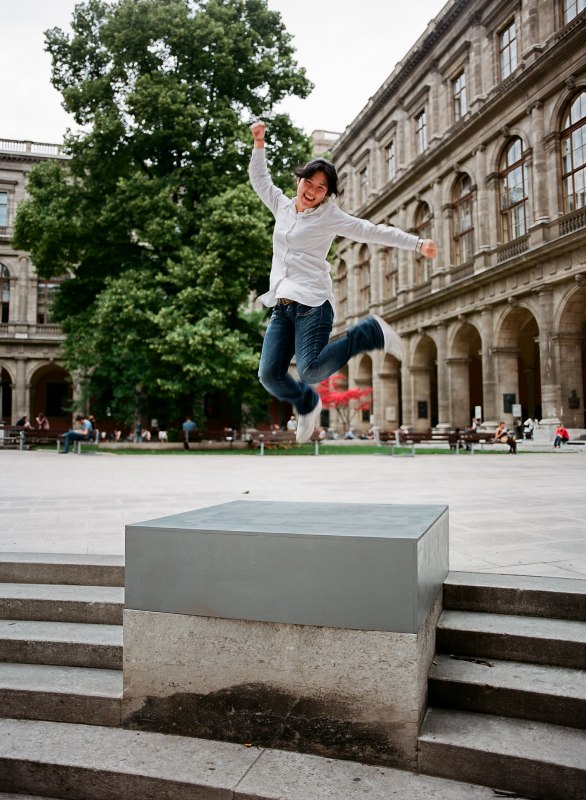
Studentin Hyunjin Lee als „lebendes Denkmal“, Fotoserie im Zuge des Kunstprojekts „Der Muse reichtʼs“ von Iris Andraschek im Arkadenhof der Universität Wien
-
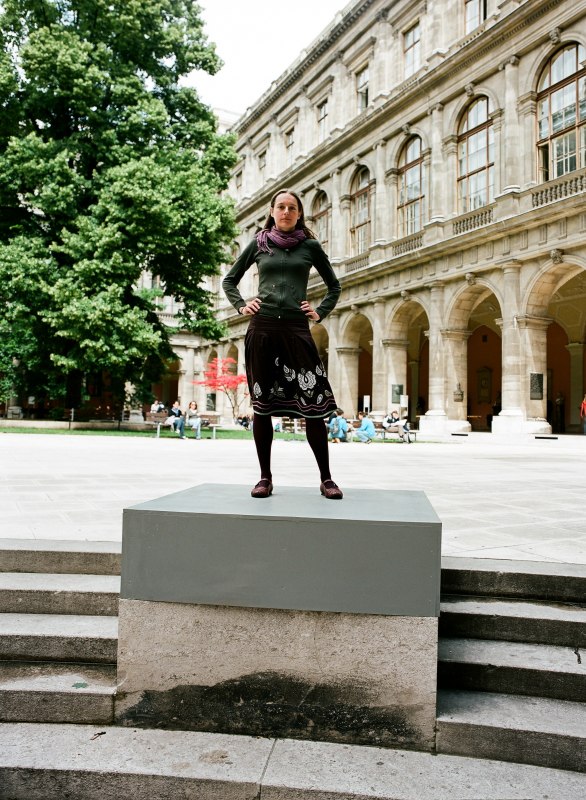
Ursula Wagner (Abteilung Frauenförderung und Gleichstellung der Universität Wien) als „lebendes Denkmal“, Fotoserie im Zuge des Kunstprojekts „Der Muse reichtʼs“ von Iris Andraschek im Arkadenhof der Universität Wien
-
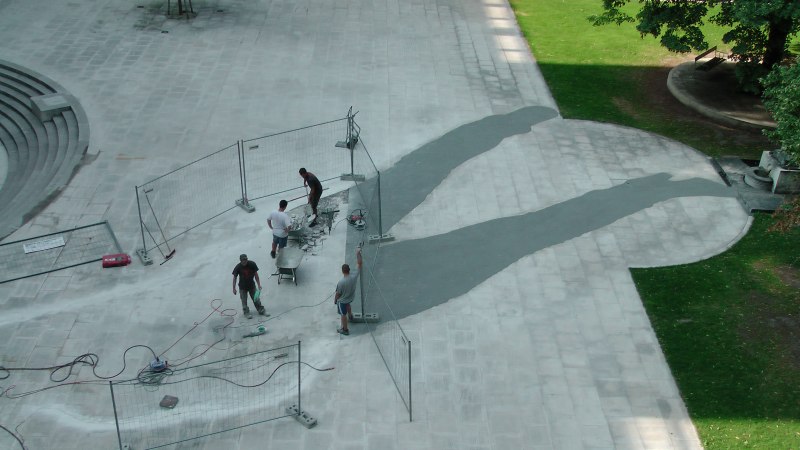
Errichtung des Kunstprojekts „Der Muse reichtʼs“ von Iris Andraschek im Arkadenhof der Universität Wien, Gesamtansicht
-

Errichtung des Kunstprojekts „Der Muse reichtʼs“ von Iris Andraschek im Arkadenhof der Universität Wien, Detailansicht
-

Sockel 1 zum Kunstprojekt „Der Muse reichtʼs“ von Iris Andraschek im Arkadenhof der Universität Wien
-
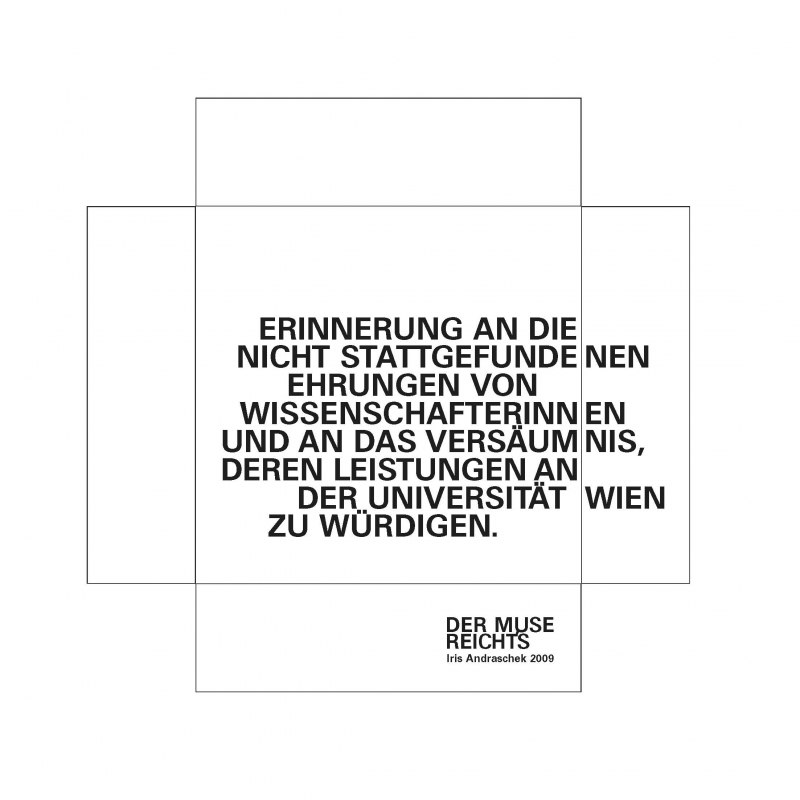
Konzept Sockel 1 zum Kunstprojekt „Der Muse reichtʼs“ von Iris Andraschek im Arkadenhof der Universität Wien
-

Sockel 2 zum Kunstprojekt „Der Muse reichtʼs“ von Iris Andraschek im Arkadenhof der Universität Wien
-

„Der Muse reichtʼs“, Kunstprojekt von Iris Andraschek im Arkadenhof der Universität Wien, Gesamtansicht
-

Tagungsprogramm „Geschlecht und Wissenschaft. Politiken der Partizipation und Repräsentation“
-
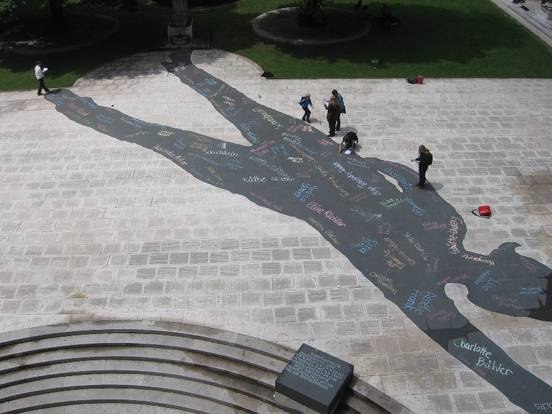
Namens-Aktion zum Denkmal „Der Muse reicht’s“ anlässlich der Tagung „Geschlecht und Wissenschaft“ 2010, Gesamtansicht
Anlässlich der Tagung "Geschlecht und Wissenschaft. Politiken der Partizipation und Repräsentation" wurden Namen bekannter Wissenschafterinnen mit...
-

Namens-Aktion zum Denkmal „Der Muse reicht’s“ anlässlich der Tagung „Geschlecht und Wissenschaft“ 2010, Detailansicht
Anlässlich der Tagung "Geschlecht und Wissenschaft. Politiken der Partizipation und Repräsentation" wurden Namen bekannter Wissenschafterinnen mit...
Last edited: 10/02/25


